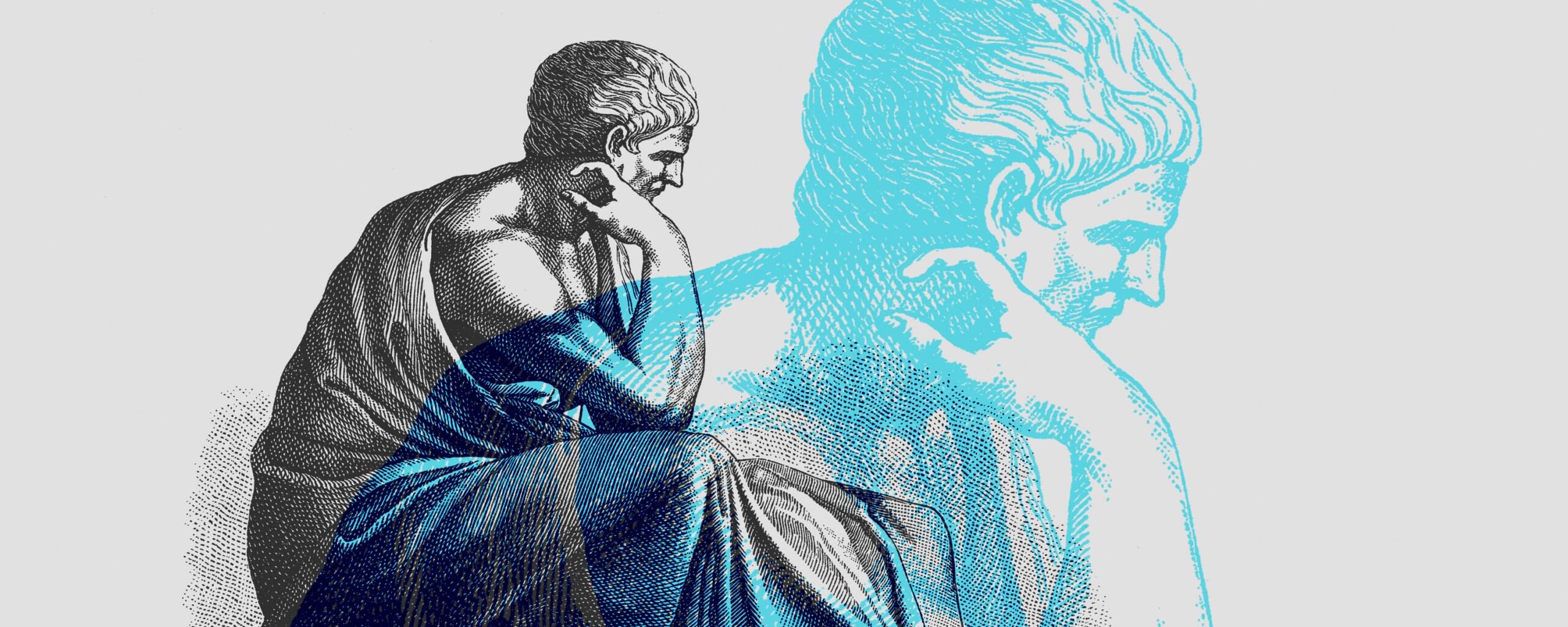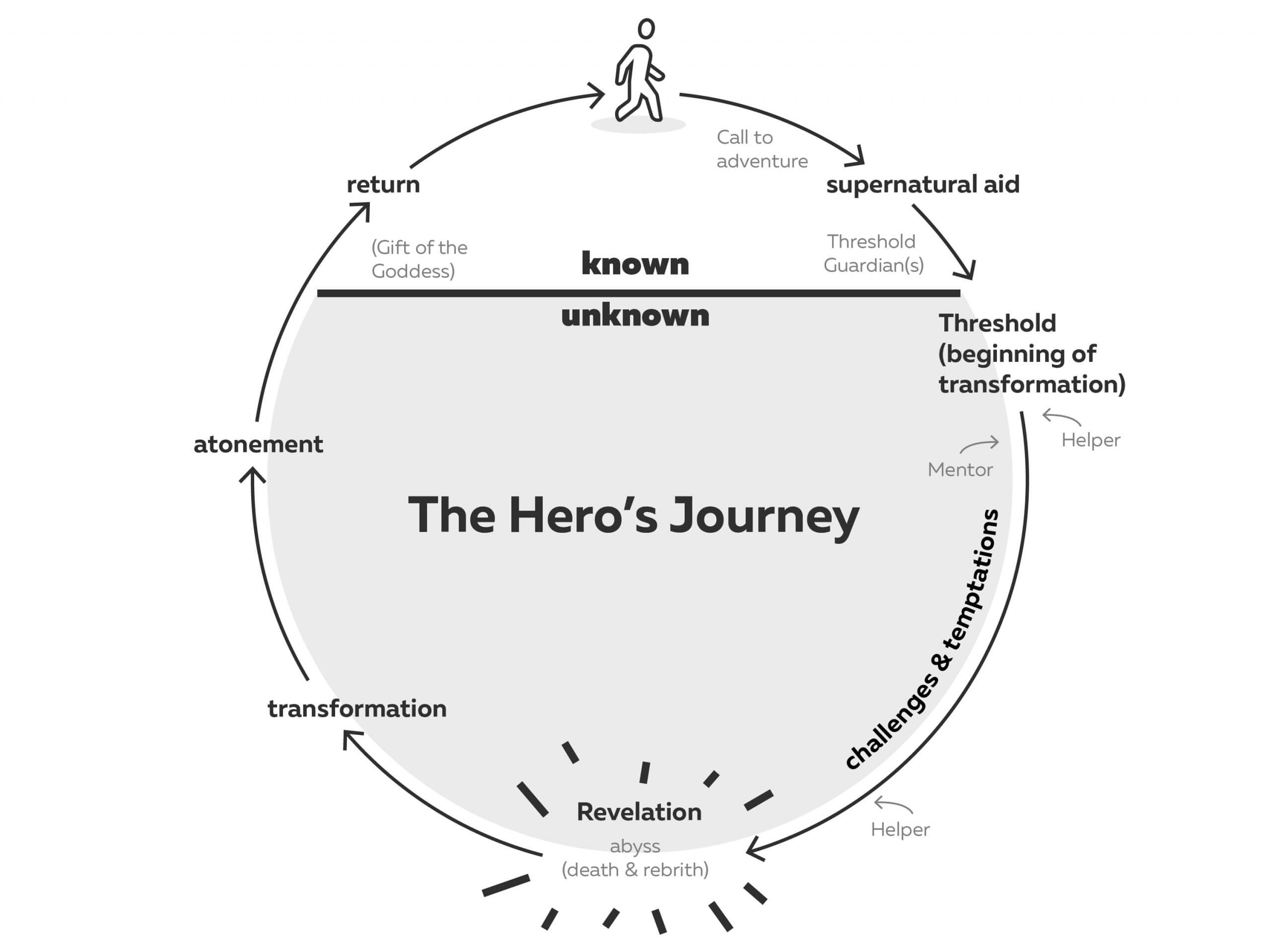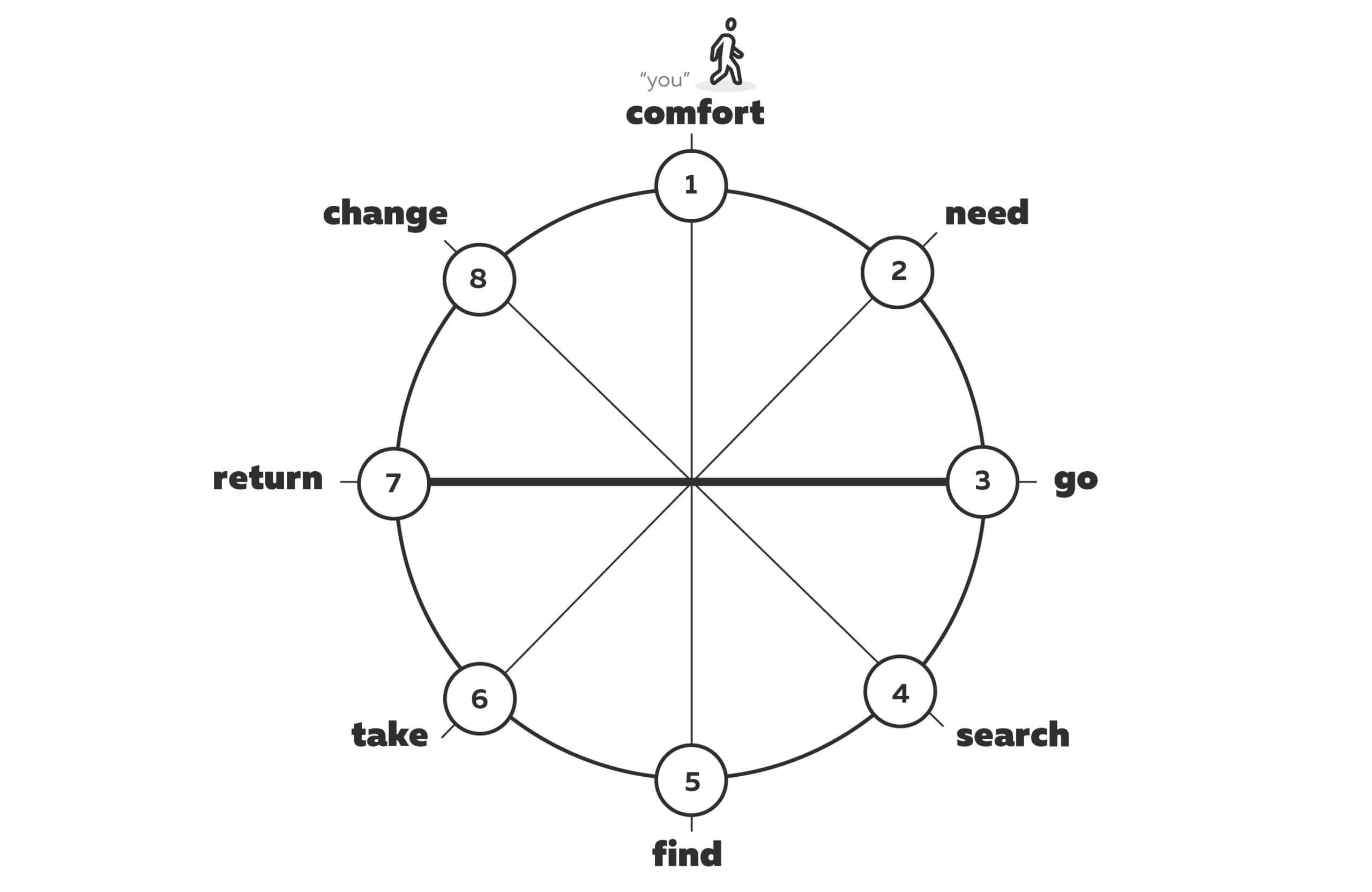


Why? It’s simple:
The cause and effect quality of narrative flow and the intensity to which human minds interact with those is a unique advantage to being human. Stories are the cornerstone of civilization.
Stories stick and help us learn
Our brains take all our sensory input and memories and build stories to make the world make sense to us. It starts as a solitary process taking place inside each of our heads; each of us with our own individual stories: simulations and abstractions that help us process speculations and emotions and compare them with reality.
Good stories stick with us, embedded in our minds. And, they resonate like sound waves to others as we retell them. They will be effective, shared, and remembered. And that’s exactly what you want for a marketing video.
It is very important to get your introductory video right.
You need to take your viewers on a journey: A Hero’s Journey.

Why write about heroes?
As long as there have been stories, there have been those who analyze their structure. History is full of many greats of storytelling, and most of them spend a lot of time concerning their writing with heroes. There’s Joseph Campbell, who delineated the concept of the Hero’s Journey in his 1949 book The Hero with a Thousand Faces.
Christopher Vogler (who was incidentally born in 1949, when Campbell published his book) expanded Campbell’s reflections from folklore to modern mediums in his book The Writer’s Journey: Mythic Structures for Writers in 2007.
Both Campbell and Vogler wrote about heroes striking out on an adventure of transformation. And that’s exactly what you should endeavor to accomplish for your audience.
If you’re trying to present a compelling video, you should place your audience in the hero’s seat. We know it’s very tempting to set yourself up as the hero, but that doesn’t sound very exciting for your audience, does it? Everyone wants to be the hero in their own story. So, let them be the Skywalker. You get to be the Obi Wan.
Dan Harmon – The Story Cycle
A recent and very approachable distillation of Campbell’s hero’s journey is Dan Harmon’s Story Cycle — an 8-part circle that can be used as a great guide in creating a fulfilling story. Eight stages, or “beats,” might seem like a lot to try to stuff into a 90-second video, but it isn’t as difficult as it may seem.
Let’s walk through Harmon’s Story Cycle as if we’re composing an introduction to a new product or service.

Story Cycle Stage 1
Comfort:
This is the easiest stage. The “you” in your video’s story is the viewer. It’s just that simple, but it’s important to project a context along with your characterization of them. You are presenting the entire video for the one viewer who is watching it and they are the hero. Frame it that way.
Story Cycle Stage 2
Need:
But there’s a problem. Your hero needs something, but they might not even know it yet. In copywriting, we would call this a “hook.” This is where you get the audience’s attention, where you focus their eyes on you so you can present your message.
Story Cycle Stage 3
Go:
In this phase, you’ll be presenting the audience with either an unfamiliar angle or context to their problem. Show what’s different and use it to set up tension.
Story Cycle Stage 4
Search:
Your audience knows there is a problem. And so, they are searching for a solution. Build interest and detail the problems. Discuss where they normally look for solutions. Empathize with their search and help them narrow their focus down to what’s important.
Story Cycle Stage 5
Find:
You have armed your audience with knowledge and provided them with information about the problem they need to solve. In this pivotal stage, you show your audience your product and how much better it is than any other solution. It’s important to show how your audience, through the proxy you’ve selected, is given agency through the revelation of this solution.
Story Cycle Stage 6
Take:
The time for searching is over. You show how they could pay a heavy price for using older, less effective solutions as a way to once again elevate yours. It’s also the best time to show your solution rising to meet greater, unexpected challenges.
Story Cycle Stage 7
Return:
The audience returns to their normal lives, their familiar context. You give them a little taste of how that need is satisfied, how much better life is for it, and all because of your product. There’s just one thing they need to do to make this dream a reality.
Story Cycle Stage 8
Change:
The one thing your audience needs to do now is take action to change their lives for the better by contacting you right away. Only you have the solution that will solve their problem.
And there you have it! You have a full story arc that casts your viewer as the hero and leads them through an entire journey, all the while supporting their tale with the basics of storytelling used by many successful videos.
But keep in mind, there are as many ways to tell stories as there are stories to tell. Harmon’s eight-point story cycle is just one. If you need just the right approach to tell your unique story, our motion experts are on hand to help.
We’re here to help you tell your story. Get in touch and we’ll help your video tell a great hero story.


